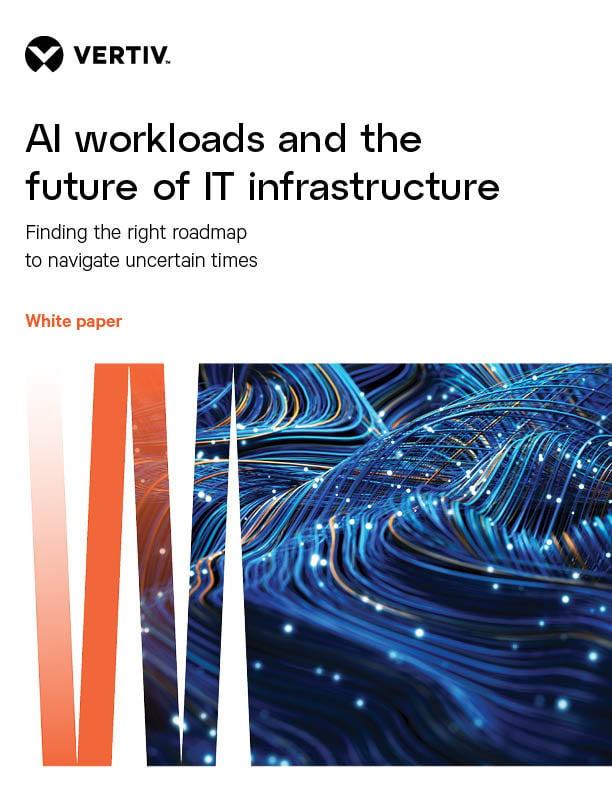Infrastructure imperatives and global initiatives
AI adoption in government is increasing, but questions remain over dedicated infrastructure investment.

AI adoption in government is accelerating due to its potential to enhance efficiency, decision-making, and service delivery. However, scaling AI poses challenges, particularly in infrastructure and data management. A 2023 NASCIO report found that while 78% of state IT leaders prioritize AI, only 35% believe their infrastructure is ready to support it.
This gap is further underscored by the rise of sovereign AI, a concept highlighted by NVIDIA, where nations prioritize developing their own AI systems to strengthen data privacy, security, and competitiveness. To achieve this, governments invest in domestic AI infrastructure, talent, and regulations, reducing reliance on external providers while aligning AI development with national priorities.
Is your government AI-ready?
AI workloads demand robust data center infrastructure, while the explosion of data requires scalable storage and secure management. For example, the Department of Defense’s AI initiatives, such as predictive maintenance for military equipment, rely on high-density GPU clusters that generate significant heat. Meanwhile, agencies like the Social Security Administration use AI to process disability claims faster, but fragmented datasets and siloed systems hinder efficiency.
These challenges are met with significant investment. According to a Brookings article, U.S. government spending on AI surged from 1.3 billion in fiscal year 2021 to 1.8 billion in 2022, a 38% year-over-year increase. The Department of Defense (DoD) drives much of this spending. At the same time, civilian agencies such as the Department of Health and Human Services (HHS) and the National Science Foundation (NSF) invest heavily in AI research and applications.
78%
of state IT leaders in the U.S identified AI and machine learning as top priority.
35%
of state IT leaders in the U.S believe in their infrastractures is ready to support AI.
$1.8b
U.S. government spending on AI in 2022, a 38% increase from the previous year.
AI imperatives in government
To successfully implement AI in government, it's essential to tackle infrastructure and data challenges, including heat management and energy efficiency. Research from Vertiv and NVIDIA shows that that liquid cooling can reduce power consumption by 10% and boost energy efficiency by over 15%. Additionally, modular data centers, tested off-site, can cut deployment times by over 40% compared to traditional methods.
To help guide AI infrastructure projects, Vertiv has developed its AI Imperatives framework. The approach defines five key imperatives to help data center owners and operators with their AI deployment plans.
| Imperative | Use case examples | Data center requirement |
|---|---|---|
| Be transformative | Infrastructure and urban planning. Constituent engagement. |
Cross-functional expertise. Holistic solution design. |
| Be efficient |
Automated data entry and processing. |
Extend value and function of existing systems. |
| Be first | Drug discovery and testing. Environmental management. |
Designs that reduce time and risk. Pre-configured systems that reduce deployment times. |
| Be confident | Trends forecasting. Cybersecurity monitoring. |
Proven solutions supported by comprehensive services. |
| Be future-ready | Policy planning and simulation. Advanced infrastructure management. Healthcare optimization. |
Interoperable, upgradable, and scalable solutions that can adapt to change. |
AI in global governments
Governments worldwide are actively exploring the use of AI to enhance public service. According to the Organization for Economic Co-operation and Development (OECD), over 1,000 AI policy initiatives from 69 countries exist, including nearly 800 governance initiatives. Here are some notable AI use cases globally:
- State land management: Singapore manages unoccupied state land and properties through machine learning and geospatial technology.
- Disability benefits processing: The US Social Security Administration uses AI to expedite disability claim determinations, reducing wait times for beneficiaries.
- Healthcare diagnostics: National Health Services (NHS) utilizes AI to diagnose heart disease in just 20 seconds, compared to the 13 minutes required by a physician.
- Tax revenue optimization: France applies AI to analyze aerial imagery, identifying unreported property improvements and generating €10 million in additional tax revenue.
- Public engagement: Belgium employs an AI-powered crowdsourcing tool during climate rallies to prioritize 15 actionable climate initiatives.
- Public safety and security: The E.U. has launched a natural language processing (NLP) system that combines social network analysis and complex event processing to detect and alert online terrorist content in real-time.
- Judicial transparency: China’s Smart Courts initiative integrates AI to reduce human errors and accelerate case resolutions.
- Cargo safety monitoring: Transport Canada employs an AI-based program to identify risky cargo, detect anomalies and prioritize cases for staff evaluation, enhancing efficiency and safety.
AI in government global landscape, according to the OECD:
1,000
global AI policy initiatives
69
countries in key regions
across the world
800
governance initiatives
benefiting from AI
Key takeaways:
Infrastructure readiness is critical
Governments must modernize infrastructure to support AI adoption.
Investment in AI is growing
Significant funding is driving AI adoption across federal and state agencies.
AI is transforming public services
Across the world, AI is improving efficiency in areas like public safety and law enforcement.

